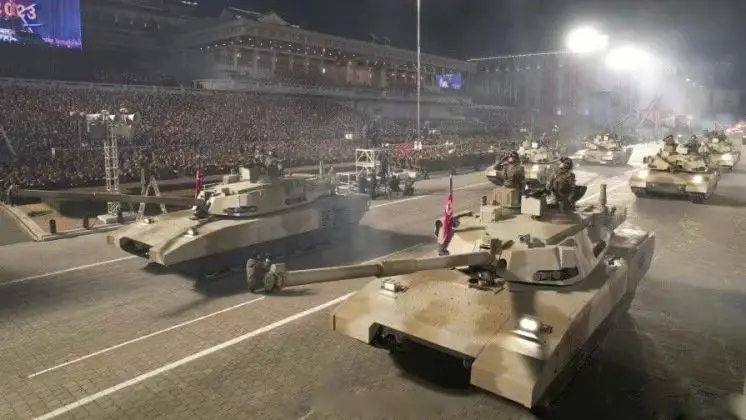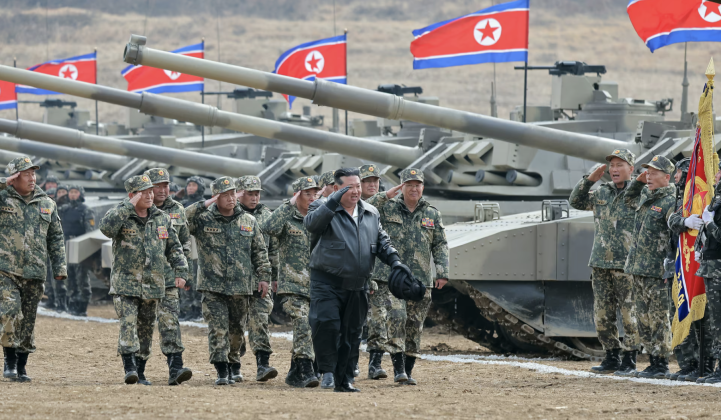The Korean People’s Army on March 13 conducted armoured warfare exercises to evaluate crews’ combat capabilities and increase familiarisation with different kinds of operational missions, with these also serving as a major demonstration of the performances of its elite tank units. The exercises were widely interpreted as a response to joint South Korean and American aerial warfare exercises simulating a massive assault on the north, and come six days after another far larger North Korean show of force in the form of major artillery drills. The tank exercises were notable for their inclusion of the country’s latest class of main battle tank first unveiled in October 2020, the name of which remains uncertain, which has been unofficially referred to in the West as M2020. The new tank class was evaluated by figures in the North Korean political leadership including chairman of the ruling Korean Workers’ Party Kim Jong Un, who according to the state run Korea Central News Agency “mounted a new-type main battle tank, seized the control lever and drove the tank himself.” The chairman reported expressed “great satisfaction” with the vehicle’s demonstrated capabilities, in particular its firepower and mobility.
Witnessing the exercises, Chairman Kim further expressed “great satisfaction” with tank crews’ combat readiness, stating that no other exercises had “satisfied him more than the tankmen’s preparedness displayed at the match” and that “he would never worry about preparing for war” if all army units were as prepared. He was joined other senior officials including Defence Minister Kang Sun Nam at the event. The North Korean leader’s attendance notably came on the day that South Korean Defence Minister Shin Won Sik called for his rapid assassination in the event of new hostilities between the two states, telling the South Korean Army Special Warfare Command to make to kill the party chairman. Kang further called for moves to “strengthen our capabilities so that we can overwhelm them” to ensure a southern and American victory in the event of a new war.
The M2020 represents a third generation of indigenous tank design in North Korea, and like its predecessors appears to be heavily optimised for operations in the country’s mountainous terrain. Like the preceding Pokpung Ho tank which entered service in the 2000s, and the large majority of Russian and Chinese tanks, the M2020 uses a 125mm smoothbore gun. This is supplemented by two Bulsae-3 anti tank missiles and an AGS-30 automatic grenade launcher, as well as a 7.62mm coaxial machine gun. Little else is known regarding the vehicle, other than its use of composite armour, possibly with a modular design, as well as a turret with particularly thick armour for better protection against top attack munitions. A leading question regarding the vehicle remains whether it has an autoloader or a four man crew, as well as whether or not its operational costs and maintenance requirements are significantly higher than those of previous generations of Korean vehicles. Prior North Korean tanks were particularly prized for their reported very low maintenance needs and conservative fuel requirements, allowing units to be kept at high levels of operational readiness and continue operations even if logistics became strained.


